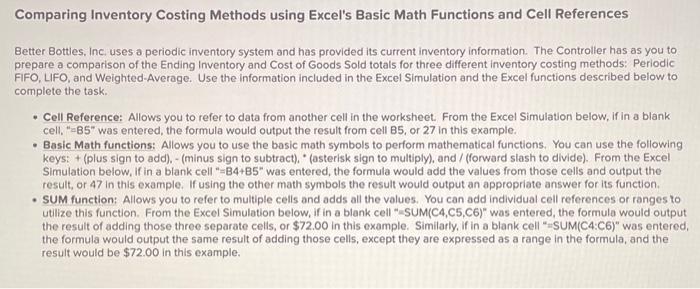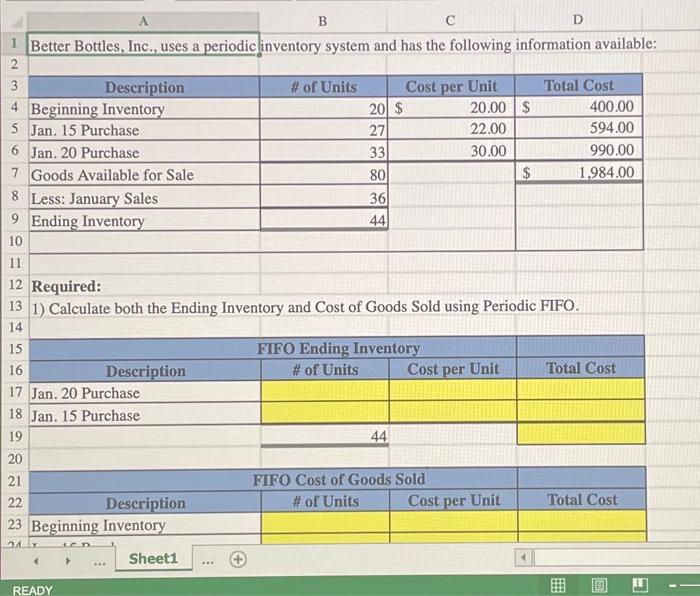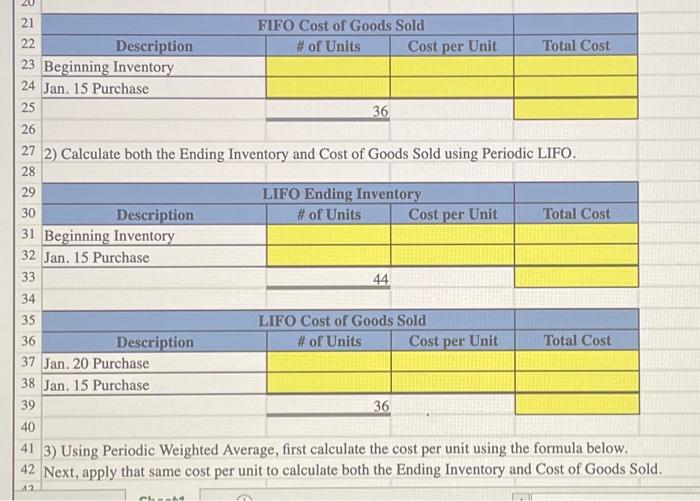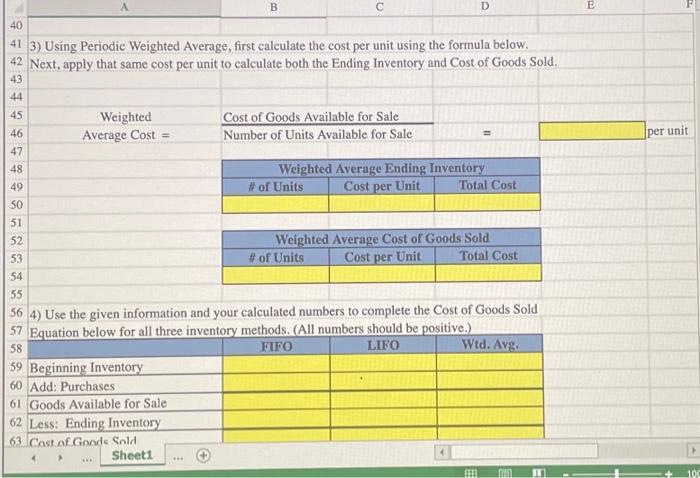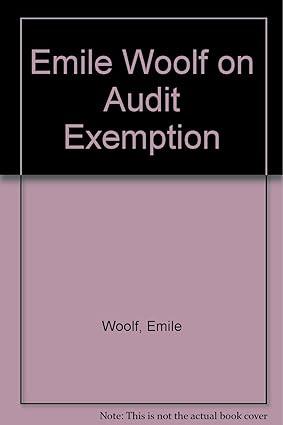A B C D 2) Calculate both the Ending Inventory and Cost of Goods Sold using Periodic LIFO. 3) Using Periodic Weighted Average, first calculate the cost per unit using the formula below. Next, apply that same cost per unit to calculate both the Ending Inventory and Cost of Goods Sold. 3) Using Periodic Weighted Average, first calculate the cost per unit using the formula below. Next, apply that same cost per unit to calculate both the Ending Inventory and Cost of Goods Sold. Weighted Average Cost = Cost of Goods Available for Sale Number of Units Available for Sale = 4) Use the given information and your calculated numbers to complete the Cost of Goods Sold Fmation helow for all three inventory methods. (All numbers should be positive.) Comparing Inventory Costing Methods using Excel's Basic Math Functions and Cell References Better Bottles, Inc. uses a periodic inventory system and has provided its current inventory information. The Controller has as you to prepare a comparison of the Ending Inventory and Cost of Goods Sold totals for three different inventory costing methods: Periodic FIFO, LIFO, and Weighted-Average. Use the information included in the Excel Simulation and the Excel functions described below to complete the task. - Cell Reference: Allows you to refer to data from another cell in the worksheet. From the Excel Simulation below, if in a blank cell. "=85" was entered, the formula would output the result from cell B5, or 27 in this example. - Basic Math functions: Allows you to use the basic math symbols to perform mathematical functions. You can use the following keys: + (plus sign to add), - (minus sign to subtract), " (asterisk sign to multiply), and / (forward slash to divide). From the Excel Simulation below, If in a blank cell "=B4+85" was entered, the formula would add the values from those cells and output the result, or 47 In this example. If using the other math symbols the result would output an appropriate answer for its function. - Sum function: Allows you to refer to multiple cells and adds all the values. You can add individual cell references or ranges to utilize this function. From the Excel Simulation below, if in a blank cell " =SUM(C4,C5,C6)" was entered, the formula would output the result of adding those three separate cells, or $72.00 in this example. Similarly, if in a blank cell ":SUM(C4:C6)" was entered the formula would output the same result of adding those cells, except they are expressed as a range in the formula, and the result would be $72.00 in this example
